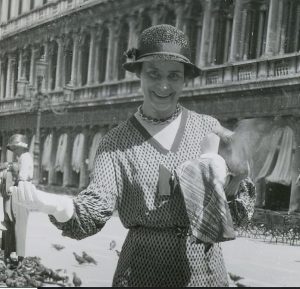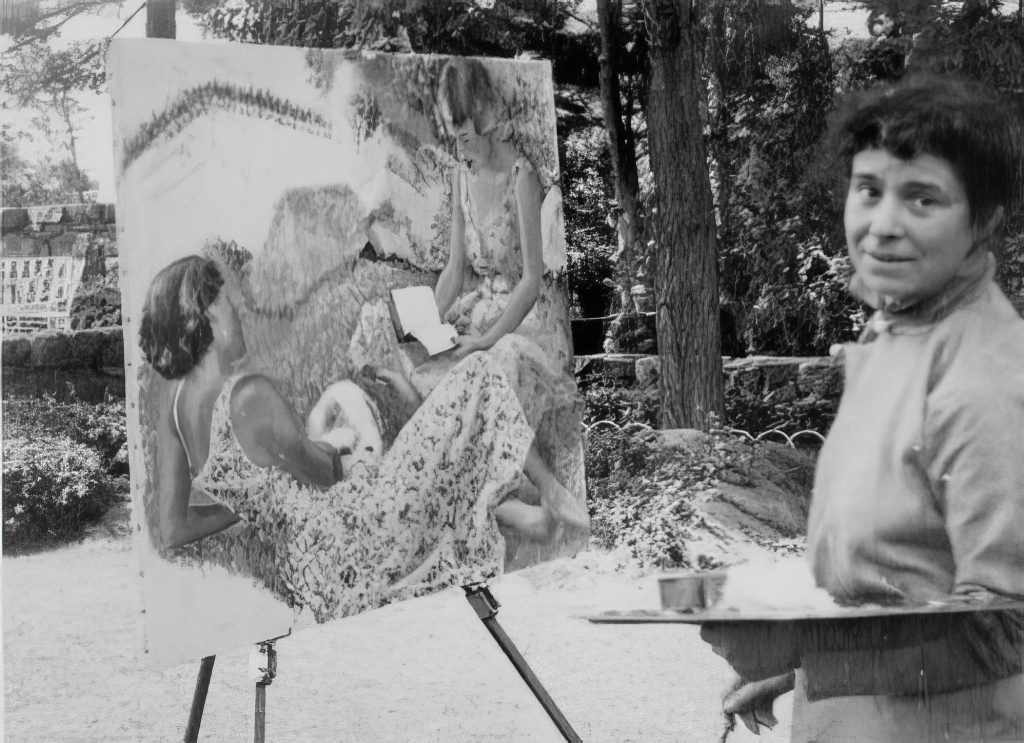
Photo info ...
Credit: Copyright Bonnet House Museum and GardensView Source
(Sept. 30, 1887- July 1, 1997). Evelyn Fortune was born in Indianapolis to , president of the Indianapolis Telephone Company and wife Mary Belle Fortune. Her mother died when she was 11 years old, leaving her father to raise her, her younger sister Madeleine, and her older brother Russell.
Fortune attended Knickerbacker Hall Girls’ School in the current day . She played on the school’s sports team, and it was during a match between Knickerbacker Hall and the Girls’ Classical School that she first encountered (1885-1977). The two formally met at Lake Wawasee in northern Indiana, where their families vacationed during the summers. She and Lilly continued to see each other over the years, but it was not until after Fortune attended that Lilly proposed to her in 1906. The two wed at Fortune’s home in on August 29, 1907. The couple had three children born in 1908, 1910, and 1918. The first two children died within the first year of life.
Over the next two decades, Fortune stayed active in the Indianapolis social scene. In 1922, she, along with eight other women of high social status, became one of the founding members of the . She also belonged to the and the Progressive Club.

Fortune and Lilly divorced in 1926. Lilly accused Fortune of being too strong-willed and independent, blamed the death of his two infant sons on her, and claimed Fortune to be affectionless. Still, the judge overseeing the divorce awarded Fortune $300,000 in cash, a car, the couple’s home at 1239 N. Delaware Street, and custody of the couple’s eight-year-old daughter Evie. The divorce ended the decades-long friendship between William Fortune and Lilly’s father
Fortune and her daughter retreated to the East Coast to live close to Fortune’s lifelong friend, Catherine Eddy Beveridge, wife of (1862-1927), at Beverly Farms, Massachusetts. Here, Fortune met her second husband, Chicago-born artist and architect Frederick Clay Bartlett (1873-1953), whom she married in 1931. As an established painter, Bartlett encouraged Fortune to paint as well.
After taking up painting, Fortune moved from watercolors to oils, developing her style. Between 1933 and 1938, Fortune created many vividly colored portraits of family and friends, still lifes, and floral paintings that bore no resemblance to her husband’s muted-toned murals, landscapes, and figurative works. Art institutions all over the United States displayed her work: Art Club of Philadelphia (1933), Herron School of Art (1934), Wildenstein and Company in New York City (1935), Pennsylvania Academy of Fine Arts (1935), Toledo Museum of Art (1935), and Grace Home Gallery in Boston, Massachusetts (1935).

Though Fortune stopped painting in 1938, the Smithsonian Institution in Washington, D.C., organized a retrospective exhibition of her work in 1982 that later traveled to the Art Institute of Chicago.
After the death of her husband in 1956, she married Daniel Elliott Huber, a stockbroker. This marriage ended in divorce in 1969.
During the last decade of her life, Fortune devoted time to her philanthropic interest in the arts. She endowed the Bartlett Gallery at the Peabody Essex Museum in Salem, Massachusetts, the Frederic Clay Memorial Gallery at Chicago’s Art Institute, and most notably she worked to list the Bonnet House in Fort Lauderdale, Florida, on the National Register of Historic Places. The Bonnet House is also a City of Fort Lauderdale Historic Landmark.

Help improve this entry
Contribute information, offer corrections, suggest images.
You can also recommend new entries related to this topic.